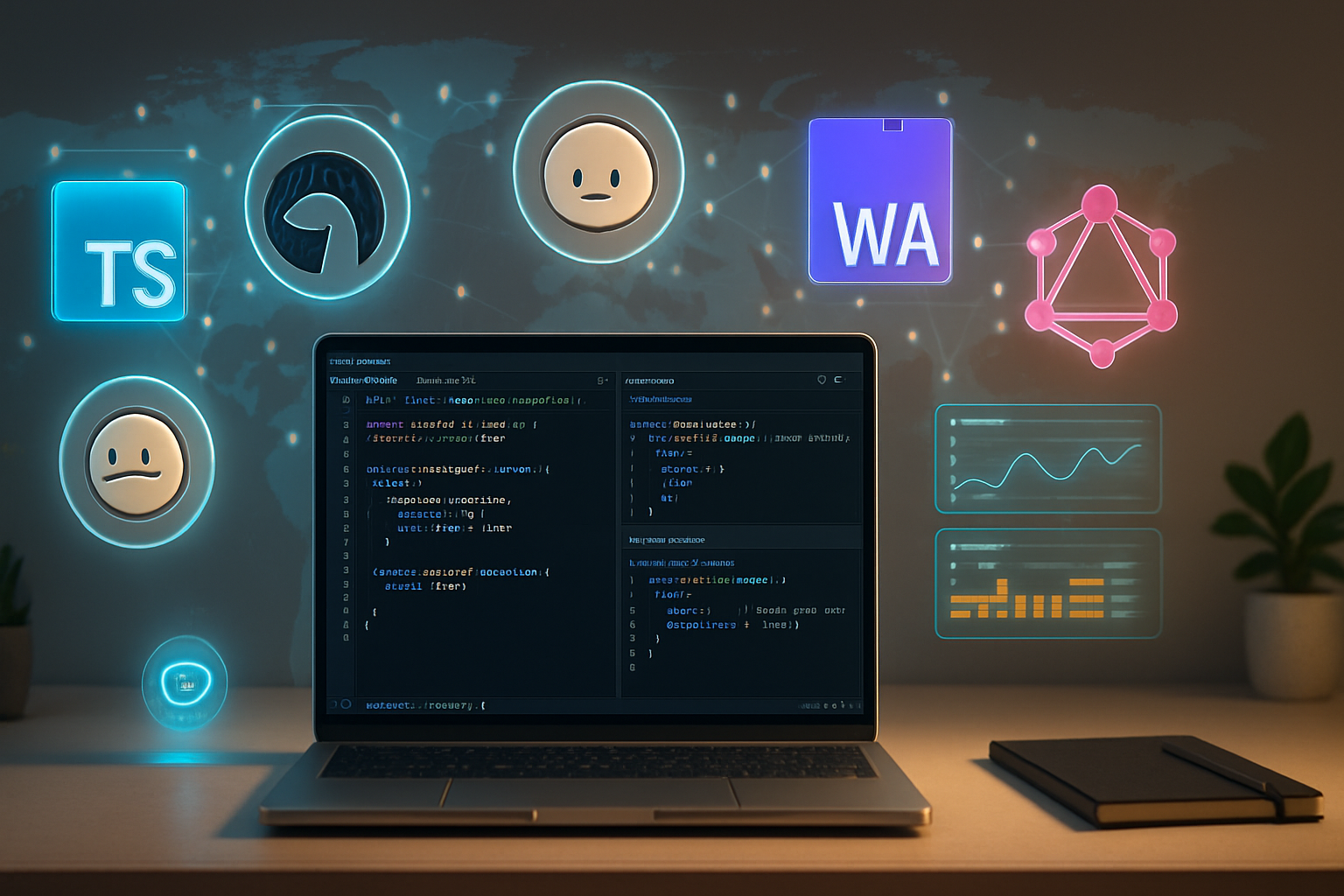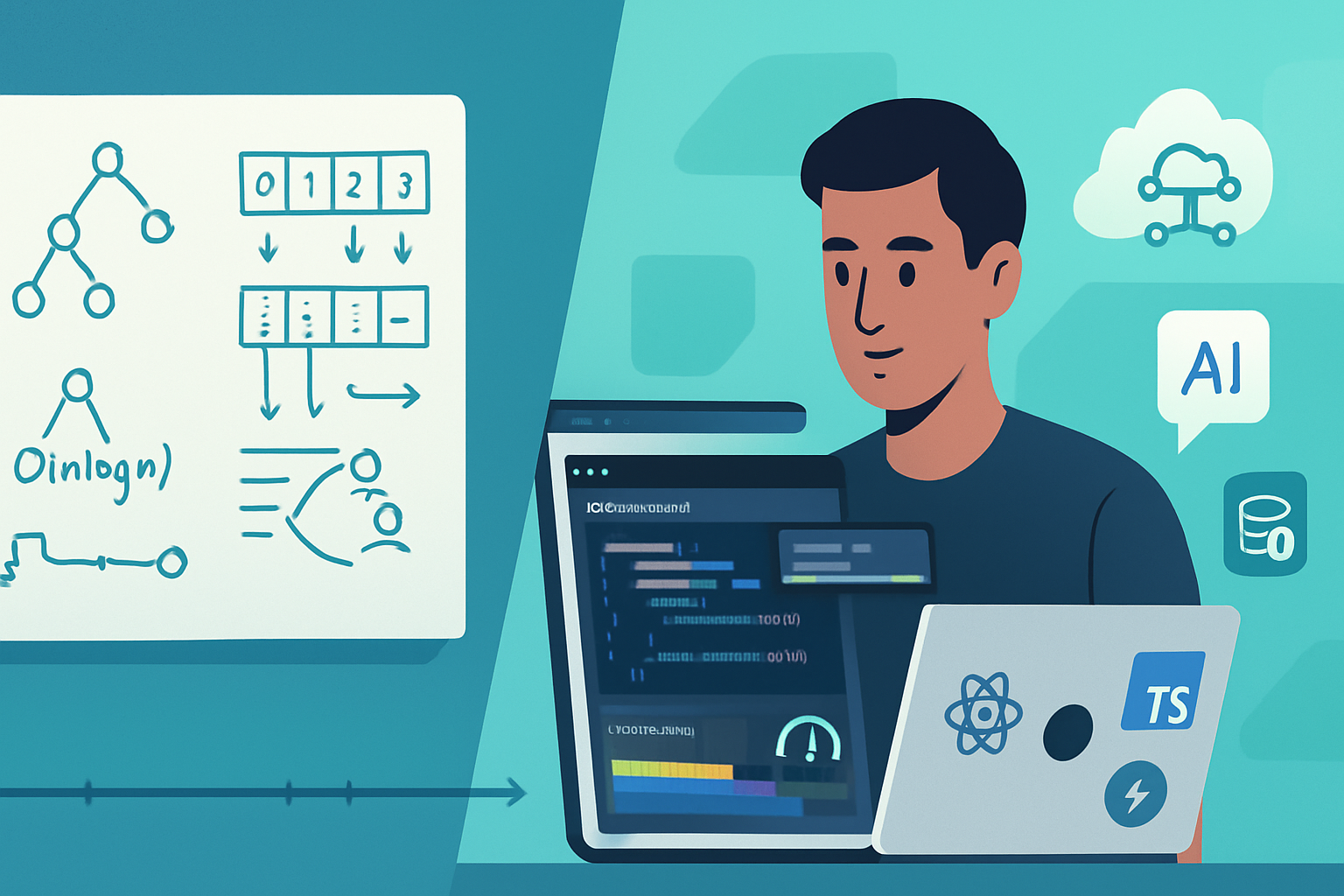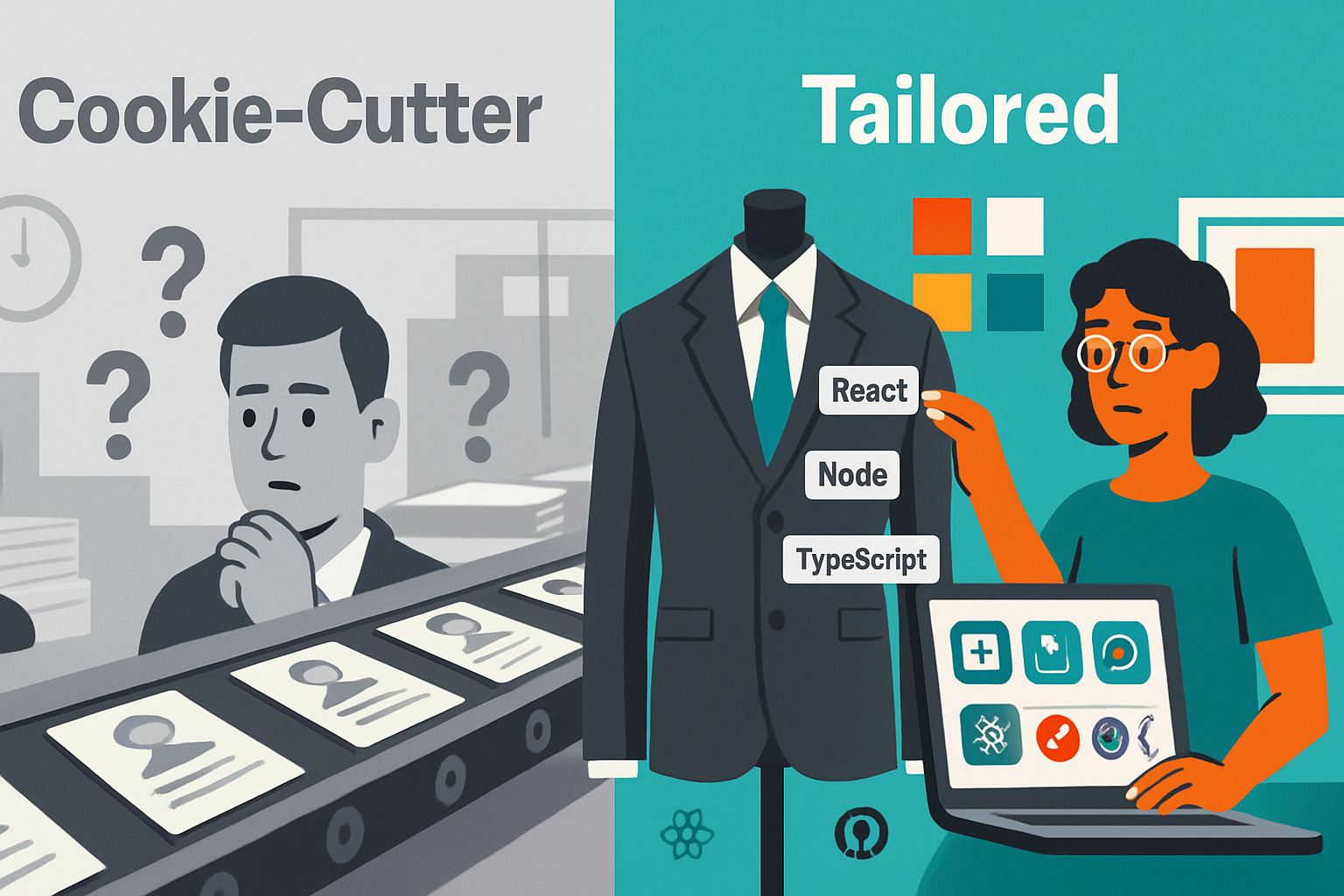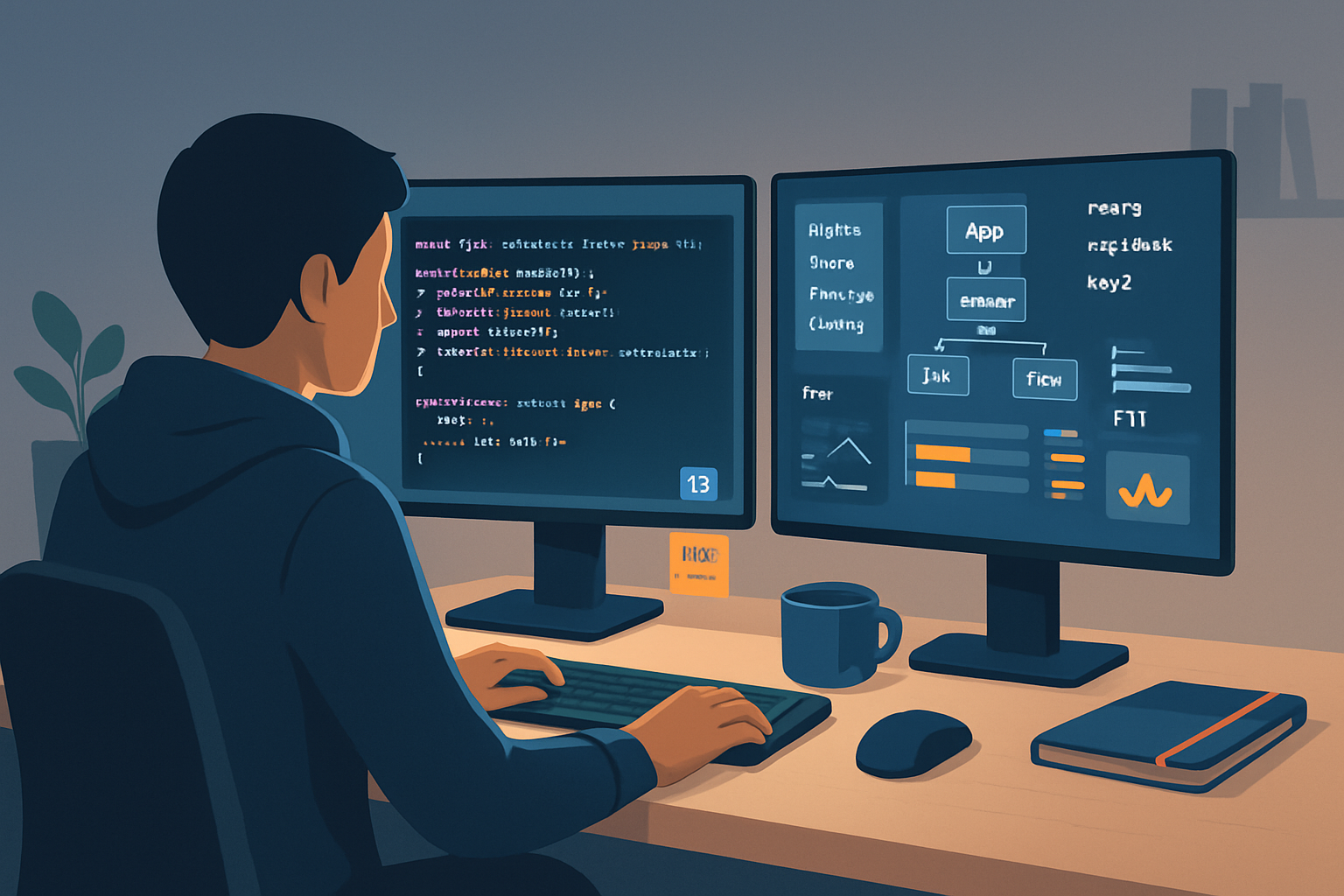· career · 7 min read
Decoding System Design: A Frontend Engineer's Guide to Building Scalable UI
A practical guide for frontend engineers that translates system-design thinking into patterns, trade-offs, and checklists for building scalable, high-performance user interfaces.
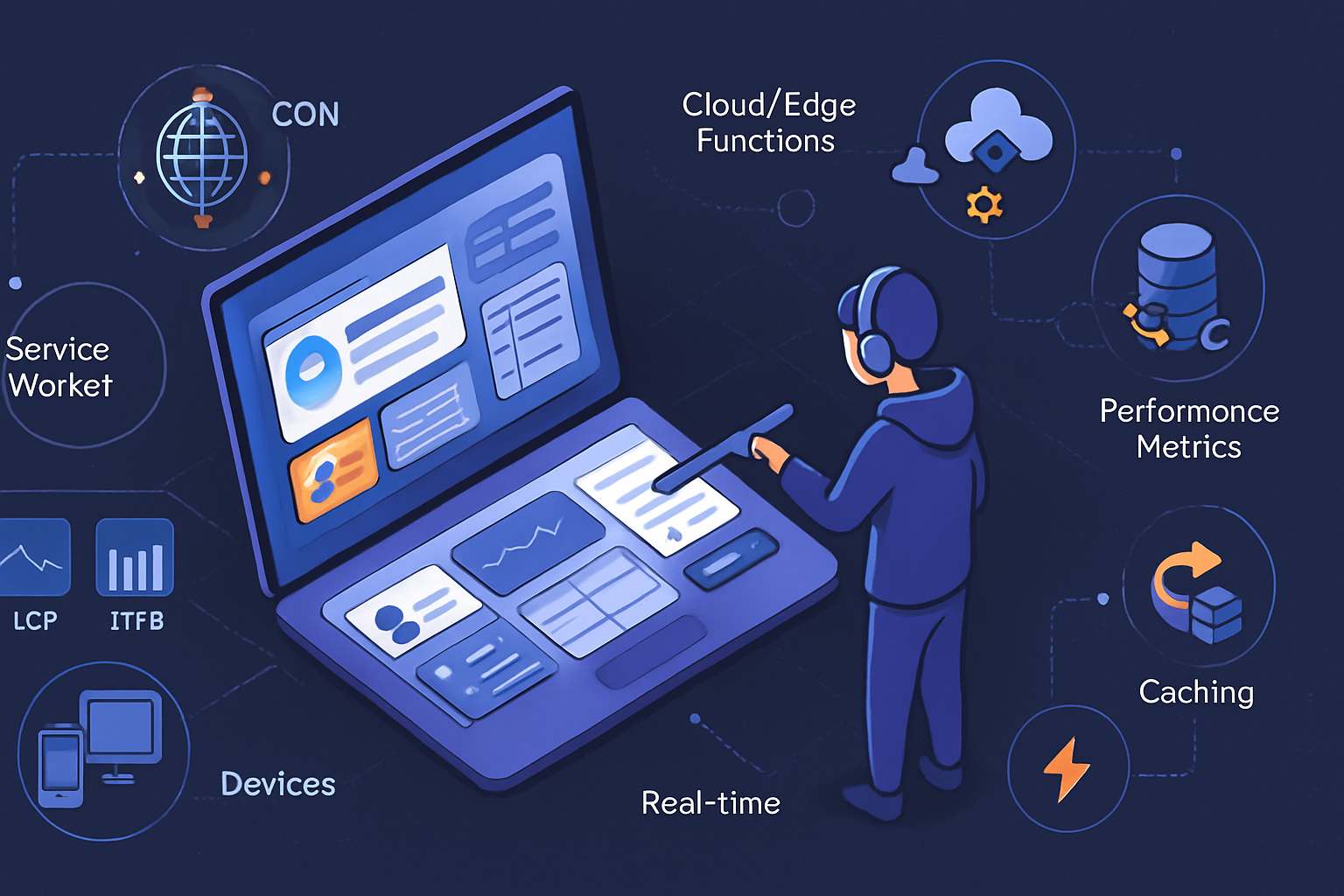
Introduction
Modern frontend engineering sits at the intersection of visual design, application logic, and distributed systems. As user bases grow, devices diversify, and expectations for speed and reliability rise, frontend teams must think beyond components and CSS: they need system design principles that ensure UIs scale while remaining performant and maintainable.
This guide explains those principles from a frontend-first perspective, with actionable patterns, trade-offs, and checklists you can apply today.
Core principles for scalable UI
- Componentization and modularity - Build UIs from small, well-defined pieces. Each component should have a single responsibility and a clear contract (props, events, composition).
- Separation of concerns - Keep rendering, state management, data fetching, and styling responsibilities distinct to make the surface area for change smaller.
- Backpressure and graceful degradation - Design for intermittent networks and device limits: fallback UI, lazy loading, and progressive enhancement.
- Observability and feedback loops - Instrument user flows and performance metrics to drive design and prioritization.
- Bias for incremental improvement - Make small, reversible changes that can be measured and rolled back if needed.
Architecture patterns
Monolith UI vs Microfrontends
- Monolith UI: single repository, single deployment, simpler cross-cutting changes. Best for small teams or when shared state and tight integration matter.
- Microfrontends: split by feature or domain, independently deployable. Useful when multiple teams own distinct product areas.
Trade-offs:
- Microfrontends reduce code coupling but add complexity in routing, shared dependencies, and UX consistency.
- Monoliths simplify global refactors and code reuse but can become bottlenecks for scaling teams.
Design systems and shared primitives
A design system provides the shared language for scalable UI: component library, tokens (colors, spacing), and accessibility patterns. It reduces cognitive load for designers and engineers and improves UX consistency.
- Publish stable component APIs and deprecate carefully.
- Use semantic tokens and a scale-based spacing system.
- Version components and use a changelog to communicate breaking changes.
References: the concept is widely used; see examples from Material Design and IBM Carbon.
Data fetching and state management
Data fetching and state are where frontend systems often break under scale. Consider these patterns:
1) Cache-first vs Network-first
- Cache-first (e.g., service-worker-cached assets, localStorage, in-memory caches) favors fast, offline-capable UX but risks staleness.
- Network-first ensures freshness but may add latency.
A hybrid strategy like “stale-while-revalidate” often provides the best UX: return cached content immediately and revalidate in the background.
Example (pseudo):
// Stale-while-revalidate using a simple cache
async function fetchWithSWR(url) {
const cached = cache.get(url);
if (cached) {
revalidate(url); // async refresh
return cached;
}
const fresh = await fetch(url).then(r => r.json());
cache.set(url, fresh);
return fresh;
}2) Client state vs Server state
- Server state (data from APIs) should be handled by dedicated caching layers (e.g., React Query, SWR, Apollo). These libraries manage cache invalidation, background refetch, and network status.
- Client state (UI-only, ephemeral) belongs in local component state or small global stores.
Avoid bloating a global store with all server data - push server-owned concerns to server-side reconstruction (SSR/SSG) where possible.
3) Pagination, infinite scroll, and virtualization
When the dataset grows, fetch in pages and render only visible items using virtualization libraries (e.g., react-window, Virtual Scroller). Offloading list rendering complexity to optimized libraries preserves smooth scrolling.
References: react-window
4) GraphQL vs REST
- GraphQL reduces over-fetching and allows clients to request exactly what they need; it simplifies composing UI from multiple resources but introduces complexity with caching and schema governance.
- REST is simple and fits well with HTTP caching and CDNs.
Choose based on team familiarity, client variability, and cache requirements.
Performance at scale
Performance is a system-level property. Focus on both front-end code and the delivery pipeline.
Key metrics to monitor
- TTFB (Time To First Byte)
- FCP / LCP (First / Largest Contentful Paint)
- CLS (Cumulative Layout Shift)
- FID / INP (First Input Delay / Interaction to Next Paint)
- TTI (Time To Interactive)
Monitor real-user metrics (RUM) and synthetic tests to catch regressions early.
Delivery optimizations
- Critical CSS and server-side rendering (SSR) for the initial render.
- Code-splitting and route-level lazy loading to reduce initial bundle size (
React.lazy, dynamic imports). - Tree-shaking and minification in build pipeline.
- Use HTTP/2 or HTTP/3 to reduce request overhead and multiplex resources.
- Serve assets from CDN, ideally with long cache lifetimes for immutable assets (content-hashed filenames).
Example: lazy-loading a heavy component
const HeavyChart = React.lazy(() => import('./HeavyChart'));
function Dashboard() {
return (
<Suspense fallback={<Spinner />}>
<HeavyChart />
</Suspense>
);
}Runtime optimizations
- Reduce layout thrashing: batch DOM reads and writes, avoid forced synchronous layouts.
- Use requestIdleCallback or low-priority scheduling for non-urgent work.
- Use Web Workers for CPU-heavy tasks.
- Avoid expensive synchronous React renders; prefer smaller components and memoization.
Image and media strategies
- Use responsive images (srcset, sizes) and modern formats (WebP, AVIF).
- Lazy-load offscreen images with
loading="lazy"and IntersectionObserver for fine control. - Defer or lazy-load non-critical third-party scripts (analytics, ads).
Offline, realtime, and resilience
Progressive Web Apps (PWAs)
- Service workers enable offline caching, background sync, and fast repeat visits.
- Use an app shell architecture: cache the minimal UI skeleton and progressively hydrate with content.
References: Google Web Fundamentals: Service Workers
Realtime (WebSockets / SSE / WebRTC)
- Use WebSockets for bidirectional low-latency flows (chat, collaboration).
- Use SSE (Server-Sent Events) for simple server-to-client event streams.
- Carefully plan reconnection, backoff, and message deduplication to prevent state drift.
Offline-first and synchronization
- Use conflict resolution strategies (last-writer-wins, CRDTs) when supporting offline edits.
- Keep UX clear: surface sync status, provide retry controls, and prevent destructive merges.
Observability, testing, and CI/CD
- Instrument key UX metrics and business events. Correlate errors with user journeys.
- Automate performance budgets in CI: fail PRs that increase bundle size or degrade metrics.
- Use end-to-end testing for critical flows and snapshot/unit tests for components.
- Canary deploys and feature flags enable gradual rollouts and quick rollbacks.
Tools: Sentry (errors), Datadog / Grafana (metrics), Lighthouse (performance), Percy / Chromatic (visual testing).
Accessibility and UX consistency
Scalable UIs must be accessible. Incorporate accessibility into the design system and CI checks.
- Automate accessibility testing (axe, Lighthouse).
- Ensure keyboard focus, ARIA attributes, and color contrast standards.
- Include accessibility in acceptance criteria for new features.
Common anti-patterns and how to avoid them
- Single massive global state: leads to tight coupling and hard-to-track updates. Use scoped stores and local state where possible.
- Large initial bundles: address with code-splitting, SSR, and critical CSS.
- Recreating widgets per route: centralize shared UI in a design system to avoid duplication.
- Blind performance micro-optimizations: measure before optimizing - focus on user-impacting metrics.
Example scalable UI architecture (reference blueprint)
- CDN edge - serves static assets (JS, CSS, images) with immutable caching.
- Edge functions / SSR - render critical routes at the edge for low latency and SEO.
- API Gateway / Backend - provides paginated APIs, GraphQL endpoints, and websockets.
- Client shell - minimal HTML/CSS loaded immediately; hydrates JS for interactivity.
- Component library - versioned, consumed by apps and microfrontends.
- Caching layer - SWR on client, CDN for assets, Redis/Edge caches for API responses.
- Observability - RUM, logs, tracing for frontend actions.
This blueprint can be mapped to specific vendors: Vercel, Cloudflare Workers, Netlify, or traditional cloud infra.
Practical checklist for each new UI feature
- UX & accessibility: acceptance criteria include keyboard support and contrast checks.
- Performance: define allowable bundle size increase and test LCP/TTI impact.
- Data: decide caching strategy (stale-while-revalidate, cache-first, real-time).
- Resilience: plan fallbacks for network errors and server latency.
- Observability: add metrics and error traces for the new flow.
- Publishing: add changelog and communicate breaking changes for shared components.
Trade-offs and closing thoughts
System design for frontend engineers is about balancing user experience, developer velocity, and operational complexity. There are no one-size-fits-all solutions - choices should be driven by user needs, team size, and the cost of complexity.
Start with simple, measurable improvements: reduce initial bundle size, add caching, instrument metrics. Build a shared design system and evolve architecture (microfrontends, edge rendering) only when the team size, release cadence, and performance requirements demand it.
Further reading
- Web Fundamentals and PWAs: https://web.dev/
- React performance patterns and libraries: https://reactjs.org/
- react-window virtualization: https://github.com/bvaughn/react-window
- Service workers primer: https://web.dev/learn/pwa/service-workers/
